Rubel CastleMichael Clarke Rubel (1940 - 2007)
Extant
844 Live Oak Ave N, Glendora, California, 91741, United States
1968-1986
The property is surrounded by a high wall, but the towers can be seen from the street. Tours by appointment only. Contact Glendora Historical Society for information.
About the Artist/Site
Located in a single-family residential neighborhood in Glendora, California, approximately 20 miles east of Los Angeles, the Rubel Castle Historic District is a 1.7-acre environment consisting of a walled, 22,000-square-foot Castle Complex and adjacent, adaptively reused citrus buildings. Referred to as Rubel Castle, Rubelia, and Rubel Pharms, the property is named after its designer and builder, Michael Clarke Rubel (1940-2007).
Michael Rubel was born in Glendora in 1940. The Rubel family had relocated to Southern California from New York in 1936. Rubel’s father, Henry Scott Rubel (aka Hal Raynor), was a successful comedy writer and musician for stage, radio, and motion picture productions, as well as an Episcopal Minister. He was under contract to Paramount Pictures, and also served as rector of Glendora’s Grace Episcopal Church until his death in 1946. Rubel’s mother, Dorothy Deuel, had been a chorus girl in New York, dancing for a time with the Greenwich Village Follies.
Throughout his life, Michael Rubel had an interest in building forts and castles. Rubel’s childhood forts often climbed multiple stories and had numerous rooms, and, taking advantage of the location of the family’s home near Glendora’s municipal dump, he also incorporated various found objects into his constructions. The grounds of Albourne Ranch had also been a favorite place to play for Rubel when he was a child. Following his father’s death, one of Rubel’s surrogate father-figures was a Glendoran named Odo Stade. Stade had traveled extensively, spoke seventeen languages, and worked for a time as a United States emissary in Mexico. He co-authored the book Viva Villa about the life of Pancho Villa, from which the movie was made. Following Stade’s lead, Rubel left school at age 17 and traveled the world for three years.
When the Bourne family subdivided and sold most of the former citrus ranch, they donated a 2.5-acre parcel, which included the reservoir and citrus ranch buildings, to Glendora’s Episcopal Church. In 1959, Rubel returned from his travels and arranged to buy a portion of the former Albourne Citrus Ranch at a bargain price, and in the early 1960s, Rubel’s mother moved to the property with Michael. The Packing House (which became known as the Tin Palace) was adaptively re-used as their primary residence, with the original coolers converted to bedrooms. Dorothy liked to throw extravagant parties, whose guests included an array of local residents, Hollywood entertainers, and politicians, including Dwight D. Eisenhower. These parties were the impetus behind the creation of Rubel’s Castle, as Michael constructed the Bottle House largely to escape all of the commotion. The construction of the Bottle House was the impetus for the project that would become Rubel Castle. Construction on the property unfolded from 1968 to 1986.
The Castle was built on a 124-foot diameter irrigation reservoir that was completed in 1910. When Castle construction began in 1968, the reservoir provided a ready-made concrete foundation. This base and the 12-foot walls established the organizing form for the complex. Capped with battlements, the Castle walls are built primarily from stream rocks and slabs of recycled granite set in cement mortar. With the original reservoir walls serving as a base, the Castle walls, buildings, and towers were constructed over time, to form a continuous, self-contained townscape. In some places, the original reservoir walls remain visible. Embedded in the mortar of the Castle walls are many recycled and found objects and curios, such as bottles, household items, and appliances, as well as portions of bicycles and motorcycles.
The tallest tower, which rises 74 feet, is the Clock Tower. The basic structure of the Clock Tower consists of 10,000-gallon water tanks, stacked vertically, bolted, and then welded together. The tanks are clad in stream rock and granite, set in cement. The side of the Clock Tower abuts the adjacent Castle structure. The water tanks were previously used to irrigate the citrus groves. By 1985, the tanks had been hoisted into place and the stream rock exterior walls had been constructed. In 1986, the Seth Thomas hand-wound clock was installed in the Clock Tower. Wound each day by a caretaker, the clock continues to mark each hour and half hour, in a chime that has become anticipated throughout northern Glendora.
Located east of the Castle, the Citrus Packing House (or Tin Palace as it is known at Rubel Pharms) was originally constructed in 1938. Utilitarian in design, the building served as the packing house and cold storage area for Albourne Ranch; in fact, the interior walls still display original posters providing instructions for boxing fruit. Measuring 36 by 108 feet, the wood-frame building is one story in height, with exterior walls sheathed in corrugated metal siding. Today, the Citrus Packing House functions as a repository for Rubel’s vast collection of memorabilia and artifacts, and as a gathering space for events.
Michael Rubel was a beloved character in the city, and his Castle quickly became a community project. Although an eccentric and nonconformist, Rubel was by no means a loner – he clearly had remarkable charm and people skills, which he used to inspire his many friends to help him design, build, furnish, and populate his compound. Michael’s enthusiasm seemed to “infect everyone,” and a large group of friends and volunteers helped Rubel accomplish his dream of building a castle. He became known throughout the San Gabriel Valley for his willingness to take any object or material, regardless of its value, and find it a home at the Castle. A wide network of friends, who became known as “Pharm Hands,” assisted him in all aspects of the castle’s construction, from digging footings, and gathering and transporting stream rocks, to providing labor to construct the castle’s many components. The Pharm Hands also alerted Rubel to the availability of discarded materials in the community.
Rubel delighted in the challenge of “liberating” and transporting to the castle such items as 10,000-gallon water tanks, railroad tracks, telephone poles, and, on one occasion, an operational windmill, which was transported to the Castle from Lompoc. As the region’s orchards gave way to widespread residential construction in the post-World War II period, many abandoned water tanks and industrial materials became building blocks for Rubel’s Castle. The incorporation of these found objects also imbues the Castle with a sense of humor and whimsy.
Michael Rubel lived at Rubel Castle until a few years prior to his death, when it became too much for him to maintain. At that time, he and his wife, Kaia, moved to a smaller house in the neighborhood. He died in Glendora in 2007. In 2005, Rubel had arranged for the Rubel Castle property to be donated to the Glendora Historical Society, which still owns and operates the property today. Residents on the property help maintain the physical and spiritual aspects of the place, and the property is open for tours by appointment and for other special events.
Submitted by Sandy Krause, Glendora Historical Society
Adapted from National Register Nomination, prepared by the Historic Resources Group
Materials
concrete, stream rocks, bottles, recycled objects, found objects
Map & Site Information
844 Live Oak Ave N
Glendora, California, 91741
us
Latitude/Longitude: 34.1503187 / -117.8545409
Nearby Environments


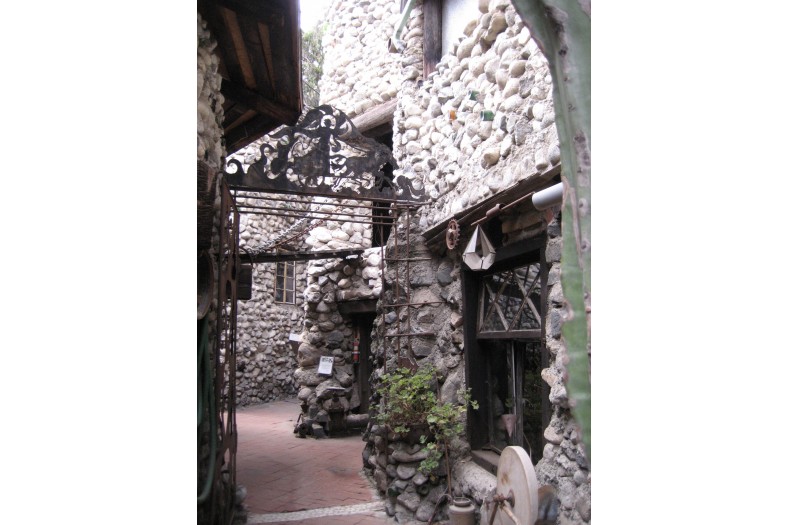
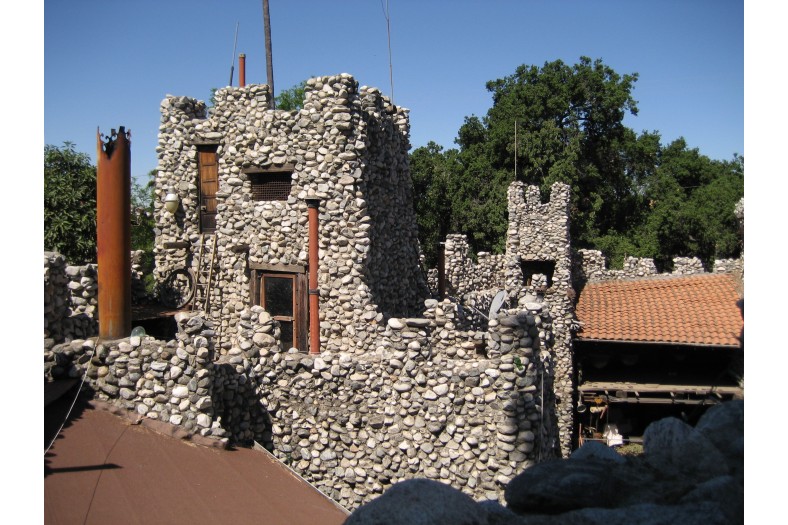
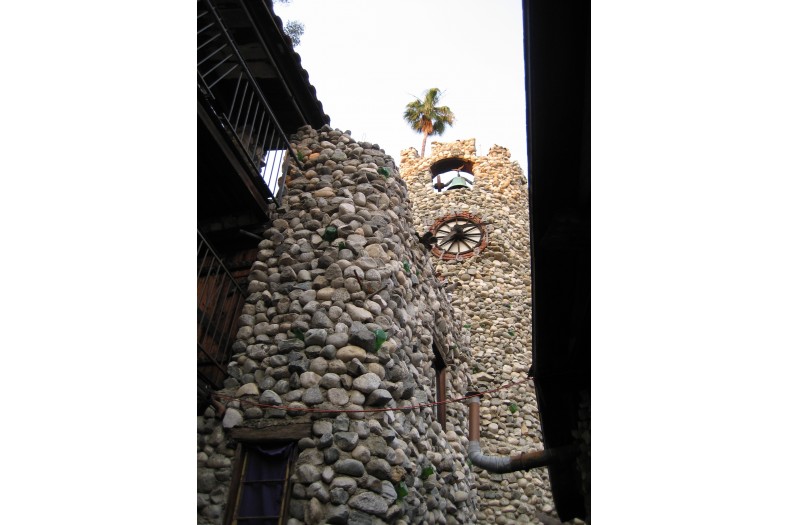
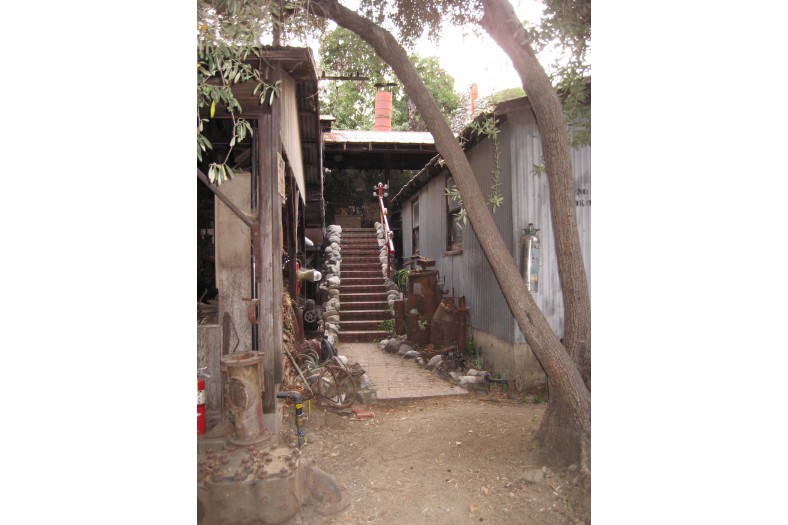
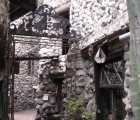
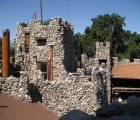
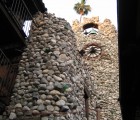
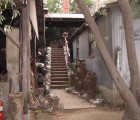



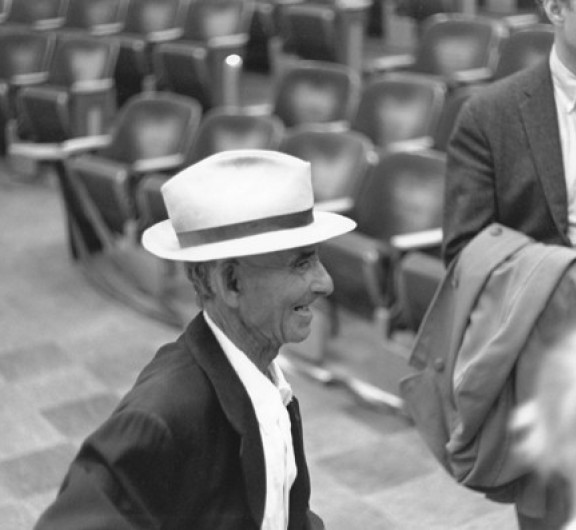
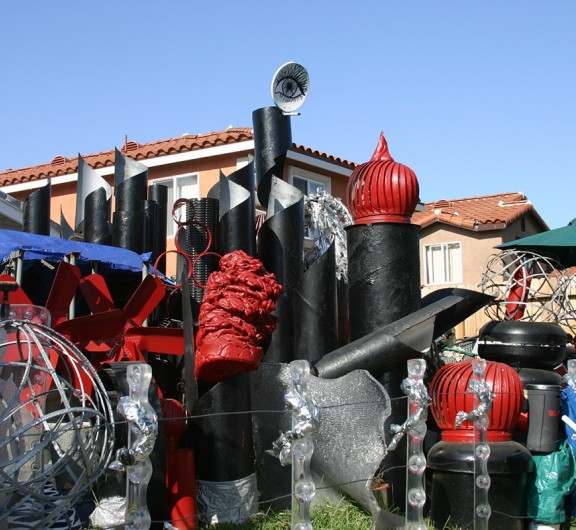

Post your comment
Comments
No one has commented on this page yet.